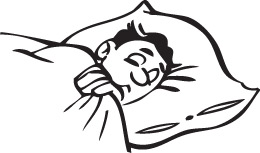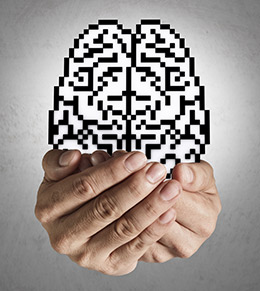“I’ll tell you my greatest regret,” comedian Jerry Seinfeld confesses in an interview with Howard Stern. “I didn’t know the importance of the morning TM in those days. If I’d had two TMs, I’d still be doing the show now. [Without that second TM], I did not have the energy. I was exhausted, painfully exhausted, all the time.” Now Seinfeld is practicing TM twice a day, and though he’s in his 60s, he has more energy than ever. Watch Seinfeld ►
Filmmaker David Lynch says he hasn’t missed a meditation in more than 40 years. You can imagine how many demands there are on a director’s time. “Mr. Lynch, where should we put this prop?” “David, I can’t say the line that way.” “Mr. Lynch, we’re over budget, and we have to talk.” Time demands are so great, in fact, that he never misses a meditation.
Or take billionaire hedge-fund manager Ray Dalio, who has said that the Transcendental Meditation® (TM) technique is the reason for his success. When the going gets toughest, he says, he always makes certain to get in both his meditations.
“I didn’t know the importance of the morning TM in those days. If I’d had two TMs, I’d still be doing the show now.” —Jerry Seinfeld
 Is TM in the Same Class as Eating and Sleeping?
Is TM in the Same Class as Eating and Sleeping?
We don’t give up eating when things get busy. We may not follow the age-old advice of three regular meals on time, but we eat. Maybe we have a hot dog while running through the airport, but our body insists on it. Eat!
We don’t give up getting dressed. As a matter of fact, when we know we have to perform—especially in the limelight—we go for high-fashion, neatly pressed, and matched. We don’t (heaven forbid) not get dressed when we’re super busy.
How about sleep? Admittedly, it suffers when we’re under pressure. We can’t get to bed, and we can’t switch off once we get there. But we know we need it, and if we go very long without it, our performance really suffers.
Is our TM practice truly a necessity in the same class as eating, sleeping, or getting dressed?
When we have a big deadline or a meeting with the higher-ups or that audition we’ve been dying for, what do we need most? A strong, fully functioning prefrontal cortex in the brain… It’s our competitive edge.
 Taking Care of Our Brains
Taking Care of Our Brains
Well, when we have a big deadline or a meeting with the higher-ups or that audition we’ve been dying for, what do we need most? A strong, fully functioning prefrontal cortex in the brain. That’s where we choose the right words for our presentation or come up with the added creative juice for that audition. It’s our competitive edge.
What if we don’t have it, and we let the pressure get to us? Then the organ in charge is the amygdala, the fear center. What does it do? It shuts down that precious prefrontal cortex and leaves us floundering there in our big moment in the sun.
TM, as the research shows, quiets the amygdala and wakes up the prefrontal cortex. It’s arguably just as important as sleep, which we can do without for a short while. And it’s arguably more important than eating a full meal because we’ll surely cram in something and get on with our business. We can even get by without our best clothes, maybe.
But our brains? Our fully functioning prefrontal cortex in all its creative, decision-making, priority-setting wonder? Go in without that, and we have a recipe for failure.
TM quiets the amygdala and wakes up the prefrontal cortex. It’s arguably more important than sleep, which we can do without for a short while.
Don’t Even Think about It
Here’s some advice. When you get into one of those super-busy days when there isn’t time to eat, sleep, or dress properly, one of those days like final exams or the big meeting with the investors, should you consider skipping a meditation? Don’t even think about it. That’s the time to be sure to meditate both morning and evening.
Jim Meade, Ph.D., is a full-time TM teacher in Los Angeles and author of 30 books, including The Answer to Cancer with Dr. Hari Sharma and five in the famous Dummies series.






[…] Just don’t see how you can possibly fit in a second meditation every day? Look at some of the things you spend discretionary time on, like checking Facebook or browsing online. Could you swap 20 minutes for a TM session? Try it for a few days and see how it feels. Check out Too Busy to Meditate? Think Again. […]
I’ve tried meditation over the years, off and on, but I never can stick with it. If I had, I’d have been meditating for close to 40 years. Now that would have been impressive. I’d like to try TM, since I have chronic sleep problems (apnea, among others). If meditation will compensate for lack of enough and/or quality of sleep, I’m game. I’m just afraid that one more time, something I won’t stick with.
Thanks for your comment, Steve. I’m sorry to hear about your chronic sleep problems. There has been a lot of research on how TM practice helps with sleep issues. Visit TM.org for more information on this and on how to learn TM. Check it out.
Many people who have tried other forms of meditation comment that the TM technique is very different, both in its effortlessness and in the results they experience in daily life. The TM course of instruction also includes extensive followup, to support you in continuing with your practice once you learn. This followup is free and available at any TM Center around the country (and worldwide). I encourage you to find out more!
I do my first TM as soon as I get up. I adjusted my schedule. It is very easy to get up 30 minutes earlier to do TM for 20 of them. I do my second TM in the aftermoon with my children. As soon as they are home from school, we all sit down and do TM.
Thanks Richard! This a great and simple way to make TM part of a family routine. How wonderful that you all mediate together!
I am a mom of 2 teenagers, I run my own company, I cook for my family every day from scratch, I go to bed at 10 pm, and I meditate 2 times a day. My day starts at 5 am. I do my morning TM for 20 min. Then I run to Yoga from 6 to 7:30 (3 times a week), then I go to work, and no matter what is happening in my life at 2:30 pm, I stop everything and do my afternoon TM. I also take one of my kids to school before going to work, and he does TM while in the car. My husband takes my other son to school and he does the same. In the afternoon I pick them both and they do their afternoon TM.
When I share this with friends the first reaction is that is not doable, but for me it is just a matter of realizing how important this is for functioning well in my life. It is a matter of commitment with living a healthy life, with a clear mind, and making sure I am not acummulating daily stress. It is a matter of discipline and priority. If you find that TM has a purpose in your life you will make it a habit!
My kids do great in school. They swim competitively and play instruments for their school bands. They have time to socialize with friends, play some games at home, and be happy. This wouldn’t be possible without TM.
Thanks for your inspiring comment, Lina. Great idea to prioritize and schedule your TM practice at a set time no matter what. Your schedule also shows how much more we can accomplish when we make TM a regular part of our daily routine, because we’re less stressed, have greater mental clarity, and are healthier and happier. And how great that your whole family meditates– you’re all experiencing the benefits, and you support each other’s regular practice. Thanks for your insights.
To Meditating Moms, Dads, and Working Parents everywhere–
How do YOU fit your TM practice into your busy days of work and family? Share your tips and experiences here for fellow meditators!
Hi. I practice my morning TM before my kids wake every day, but with the busy life of a working mum, I don’t always get an opportunity to have another TM, and when I do find the opportunity for a second TM it is rarely a consist time. Is this ok, or should I make changes to get more from my TM?
Hi Claire. Great idea to get up early to practice your TM before the kids wake up. This is something many busy parent do. As a working mum you must sometimes feel like our illustration above! That’s excellent that you try to fit in your afternoon meditation as often as you can. The most important thing for getting the maximum, cumulative results from your practice is to meditate twice a day, and it’s ok if it’s not always at the same time in the afternoon. Some parents do their TM at work before going home, or during a 20-minute break in the afternoon. What has worked for other working moms and dads out there? We’d like to run an article on just this topic. Thanks!
Thank you, I would love to hear how other working parents fit their TM practice in to their day
When is the best time to do the morning TM? Can I do it after I get the kids off to school and workout or should it be done first thing upon awakening?
Hi Donna, This is a good question, and relevant for busy parents everywhere. Your morning TM does not need to be first thing upon awakening, but ideally as early as possible in your day. It’s ok to do your TM after you get the kids off to school, if that’s more convenient for your schedule. But if you find that it’s harder to control your schedule the longer you wait, try scheduling your TM earlier. Finding a regular routine that works for you is what’s most important. Whether you practice TM before or after a morning workout is up to you. If it’s a vigorous workout that leaves you winded, try meditating beforehand, or take a break before you meditate to allow your physiology to settle. Find a regular routine that works for you. Thanks for your question, and best wishes.
I find that my TM practice works best when I meditate first thing in the morning, especially before drinking coffee or eating.
Thanks, Nancy. This is a good point. Doing one’s morning meditation before eating or drinking coffee is preferable, since both raise the metabolism and could interfere with our physiology settling down during TM. If this isn’t possible due to family responsibilities, later is fine, preferably before any caffeine.
Excellent, to the point on the power of TM. I used to be in situations in which the amygdala was calling the shots. Since practicing TM (both morning and night) I have been able to put my amygdala in check. Thank you for the article
Thanks for your comment, Dan. A perfect coda to a wonderful article.
Wish there was something in grand junction co
Hi Kate. Thanks for your comment. I believe there might be something nearby. Check this page for more information http://www.tm.org/transcendental-meditation-grand-junction. Good luck and best wishes!